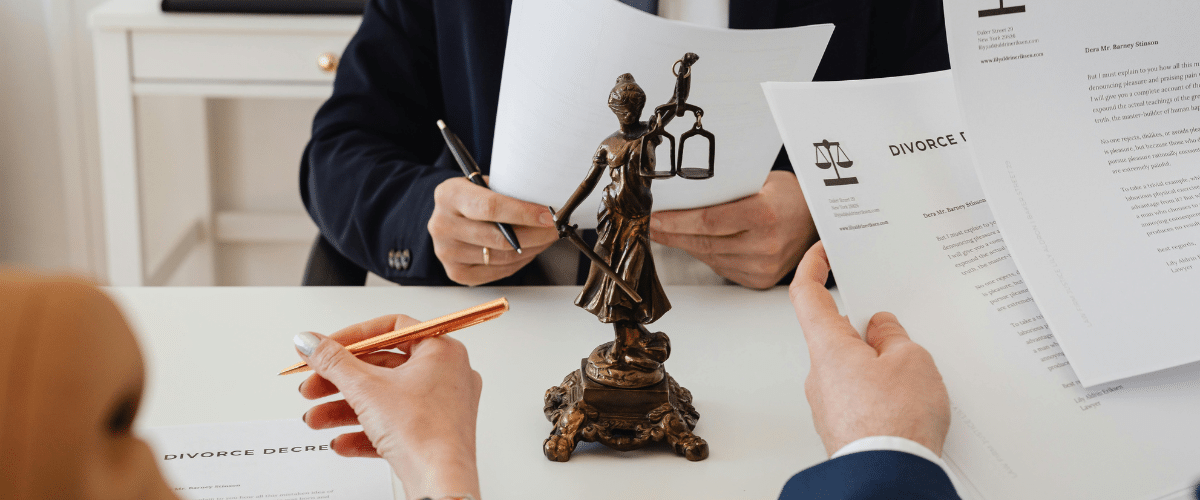Navigating a personal injury lawsuit can be daunting, laden with legal complexities and emotional challenges. Surprisingly, statistics reveal that several cases never see the inside of a courtroom.
According to the Law Dictionary, approximately 95 percent of pending lawsuits are resolved through pre-trial settlements. This high settlement rate emphasizes the critical importance of proactive strategies in the legal realm and underscores the significance of meticulously planning for pre-trial negotiations. It often proves to be a pivotal factor in securing favorable outcomes for both plaintiffs and defendants alike.
In light of these statistics, adopting proactive tactics for settling personal injury lawsuits out of court emerges as a strategic imperative. It promises expedited resolutions and mutually beneficial outcomes for all parties involved.
Early Case Assessment (ECA)
An early case assessment (ECA) is crucial in proactively managing a personal injury lawsuit. According to Lexology, ECA involves locating and evaluating pertinent information at the onset of legal proceedings. This process lets you determine potential legal liability, assess risks and project-associated costs, consider different approaches, and develop a comprehensive litigation strategy.
ECA typically entails interviewing relevant individuals, gathering and analyzing data, conducting data analytics, and generating comprehensive reports. This proactive approach ensures that you are well-informed and prepared to navigate the complexities of your personal injury case efficiently and effectively.
The primary objective of an ECA is multifaceted. Undertaking an ECA allows legal teams to identify legal liabilities, assess risks and costs, and explore strategic options. This proactive approach aids parties in crafting a tailored litigation strategy informed by the specifics of their personal injury case.
Open Channels of Communication
Effective communication is the linchpin of successfully resolving conflicts. Create transparent channels of communication with all stakeholders. Express concerns clearly while actively listening to other’s viewpoints.
Maintain a respectful tone to foster a conducive negotiation environment. Building bridges through communication makes finding common ground achievable, leading to satisfactory resolutions for everyone involved.
Facilitated Mediation
According to insights from Harvard Law School, mediation is a structured avenue for resolving disputes guided by a neutral mediator. This process is distinct from arbitration, where a third party takes on the role of a judge. In mediation sessions, each party articulates their case, while the mediator facilitates discussions and helps identify areas of potential agreement.
Unlike adversarial court proceedings, mediation encourages a spirit of compromise and collaboration, prioritizing mutually beneficial resolutions over the concept of winning or losing. Moreover, the mediation process is characterized by its confidentiality and voluntary nature, allowing parties to engage in discussions more openly.
Mediation, with its emphasis on compromise and collaboration, stands out as a more efficient and expeditious alternative to traditional courtroom litigation. It makes it a desirable option for individuals seeking timely resolution in personal injury cases.
Understanding Regional Laws and Jurisdictional Factors
Understanding and navigating local legislation is vital in resolving personal injury cases, as liability, damages, and insurance laws vary across jurisdictions. For instance, being well-versed in state legislation is crucial in Missouri, especially regarding damages. TorHoerman Law highlights that in Missouri, there are caps on non-economic damages like pain and suffering, which can influence settlement amounts.
This significance of local legislation is particularly evident in personal injury cases such as car accidents, which are common in urban centers like St. Louis. Therefore, it is advisable to maintain communication with a knowledgeable St. Louis personal injury lawyer to navigate these complexities effectively.
Local regulations can impact various aspects, including the statute of limitations, fault determination, and types of recoverable damages. Staying informed about these nuances and integrating them into your legal strategy can help leverage jurisdictional differences to achieve a more favorable outcome.
Innovative Settlement Approaches
Innovative approaches beyond traditional compensation structures often benefit settlement negotiations in personal injury cases. These methods offer tailored solutions to meet all parties’ unique needs, fostering efficient and mutually beneficial resolutions.
Structured Settlements:
Structured settlements provide a flexible way to compensate injury victims over time, offering periodic payments instead of a lump sum. This approach ensures stability and long-term financial security, particularly for those with ongoing medical needs or disabilities.
Alternative Compensation:
Parties may agree to alternative forms of compensation beyond monetary damages, such as services or non-monetary benefits. Addressing the injured party’s specific needs can lead to more comprehensive and sustainable outcomes.
Creative Resolution Strategies:
Thinking creatively to find solutions that meet everyone’s interests can involve trade-offs or compromises beyond monetary compensation, by focusing on mutual gains, creative strategies foster cooperation and goodwill among stakeholders.
Contingency Fee Arrangements:
Innovative contingency fee arrangements may include performance-based incentives or outcome-driven bonuses for attorneys. This incentivizes efficient and effective resolution of cases.
Compiling Evidence and Documentation
Gathering comprehensive evidence and documentation is a crucial step in preparing for a personal injury lawsuit settlement outside of court. This process involves collecting medical records, accident reports, witness statements, and any other relevant documentation that supports your case. Additionally, preserving evidence such as photographs, videos, and physical evidence can strengthen your position during negotiations.
Early compilation of comprehensive documentation equips you with essential tools for persuasive argumentation and effective negotiation with the opposing party. This proactive approach not only streamlines the settlement process but also enhances the likelihood of achieving a favorable outcome.
Expert Legal Representation
Securing expert legal representation is paramount in navigating the complexities of a personal injury lawsuit and ensuring favorable outcomes. A skilled attorney brings invaluable knowledge of legal procedures, negotiation tactics, and case law to the table.
They can provide tailored advice, advocate for your rights, and skillfully negotiate with insurance companies or opposing parties. With their guidance, you can navigate the legal process with confidence and pursue a good possible resolution for your case.
In conclusion, proactively addressing personal injury matters, with early assessment and clear communication, aids in resolving disputes extrajudicially. Engaging in guided mediation, exploring innovative settlements, and maintaining thorough documentation bolster one’s position. Seasoned legal guidance enhances negotiation tactics, promoting quicker and more collaborative resolutions.
This proactive mindset not only expedites outcomes but also fosters cooperation, leading to more tailored and amicable solutions. Prioritizing individual needs and demonstrating a commitment to fair resolutions enables efficient navigation of personal injury cases. This approach enhances the likelihood of satisfactory outcomes without resorting to prolonged litigation.
Published by: Holy Minoza







